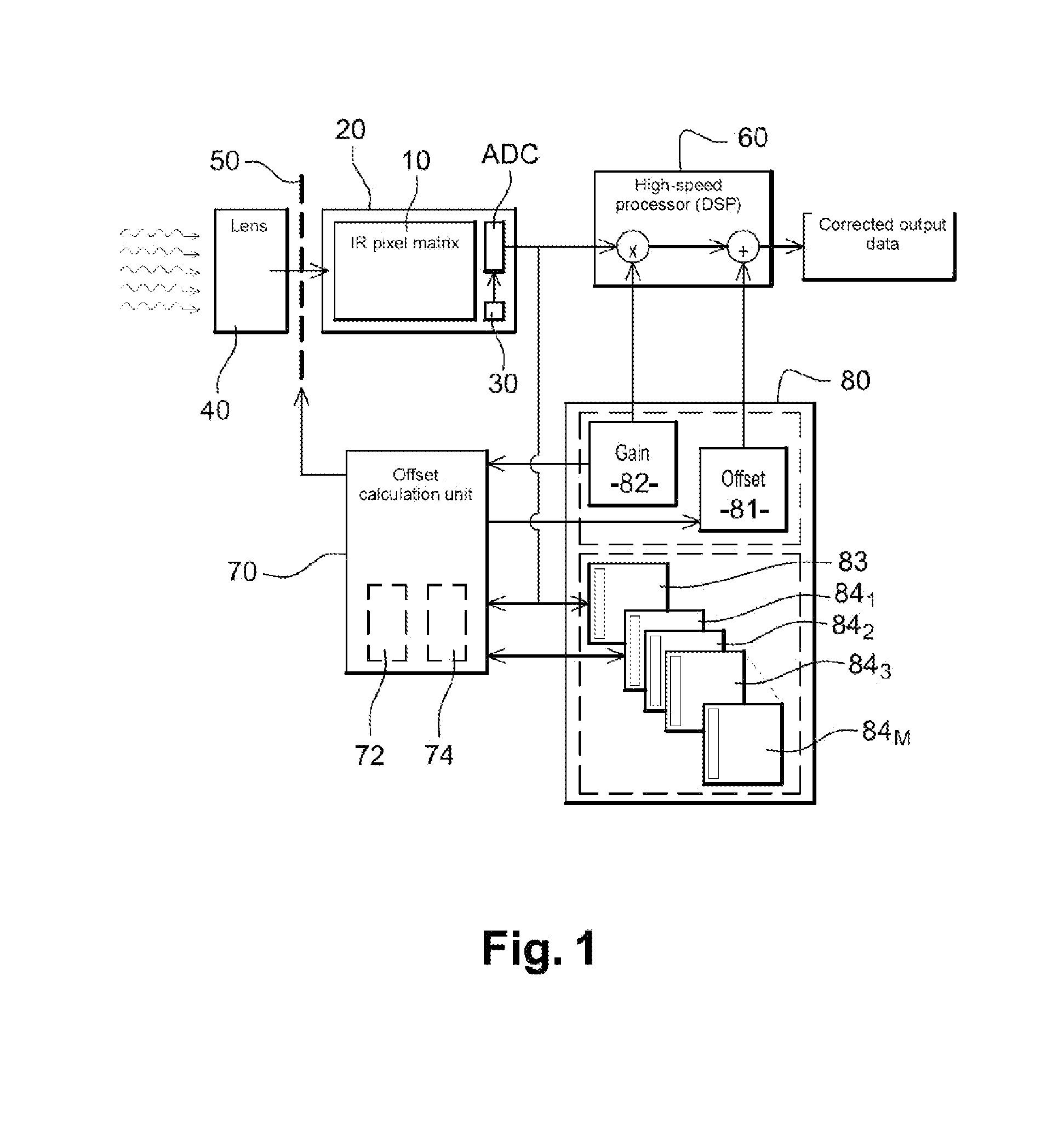Method for correcting images output by a detector without temperature regulation and detector implementing such a method
- Summary
- Abstract
- Description
- Claims
- Application Information
AI Technical Summary
Benefits of technology
Problems solved by technology
Method used
Image
Examples
Embodiment Construction
[0082]The following description describes one preferred embodiment of the invention which is considered optimal in terms of optimising the frequency at which the shutter is closed (and hence image loss) and correction accuracy.
[0083]It must nevertheless be appreciated that there are two separate updating conditions even if they appear to overlap in time in the embodiment that is described below: one relates to updating the offset table and one relates to updating a set of raw value tables.
[0084]Obviously, it is possible to perform execution of both these updates in parallel and independently.
[0085]FIG. 1 schematically shows a bolometric detector according to the invention. This detector is not temperature controlled and detects radiation from a scene that is to be observed in the infrared region.
[0086]The detector comprises an array 10 of elementary thermal detectors, or bolometers, which each comprise a bolometric membrane suspended above a substrate by support, bias and thermal in...
PUM
 Login to View More
Login to View More Abstract
Description
Claims
Application Information
 Login to View More
Login to View More - R&D
- Intellectual Property
- Life Sciences
- Materials
- Tech Scout
- Unparalleled Data Quality
- Higher Quality Content
- 60% Fewer Hallucinations
Browse by: Latest US Patents, China's latest patents, Technical Efficacy Thesaurus, Application Domain, Technology Topic, Popular Technical Reports.
© 2025 PatSnap. All rights reserved.Legal|Privacy policy|Modern Slavery Act Transparency Statement|Sitemap|About US| Contact US: help@patsnap.com



